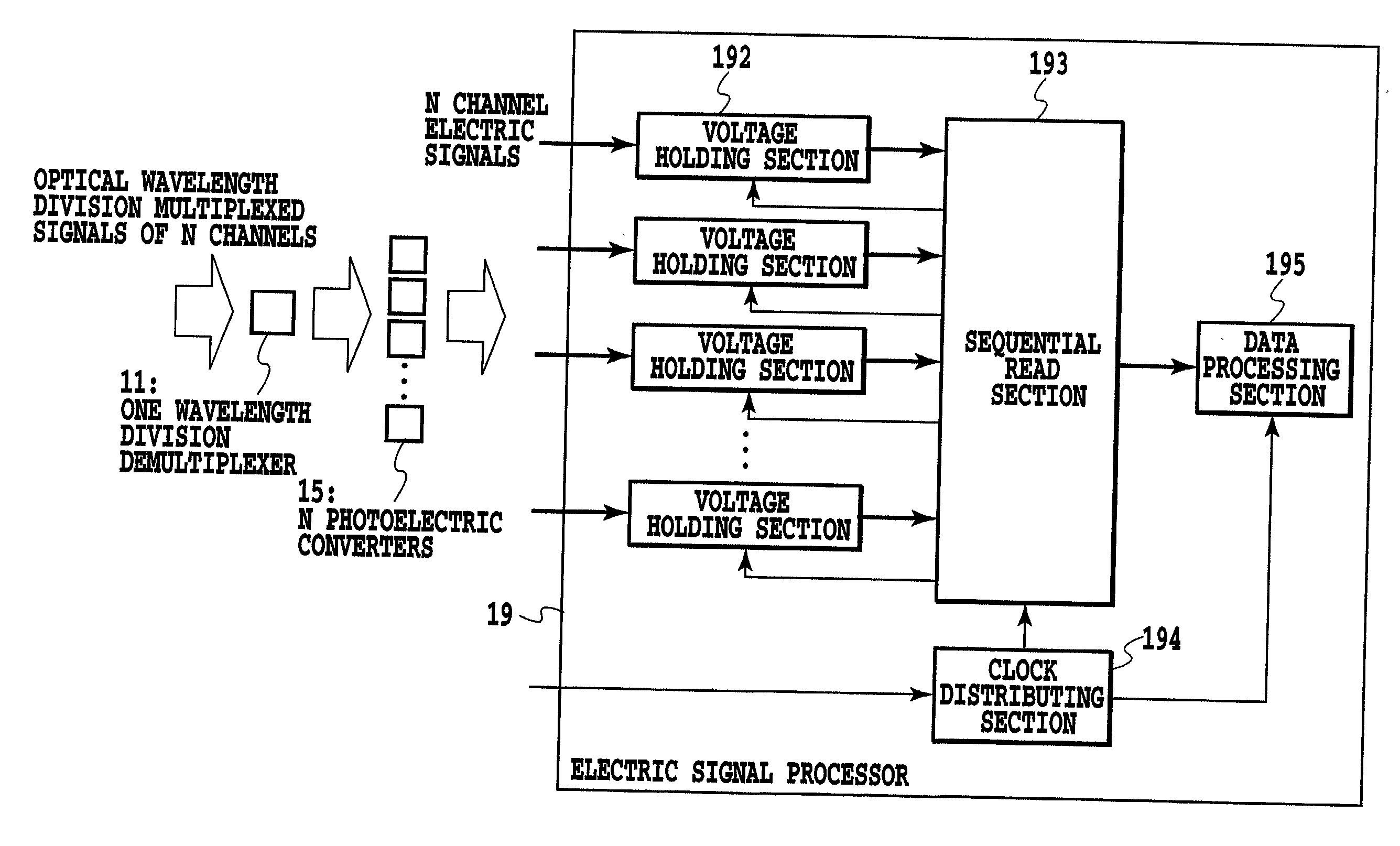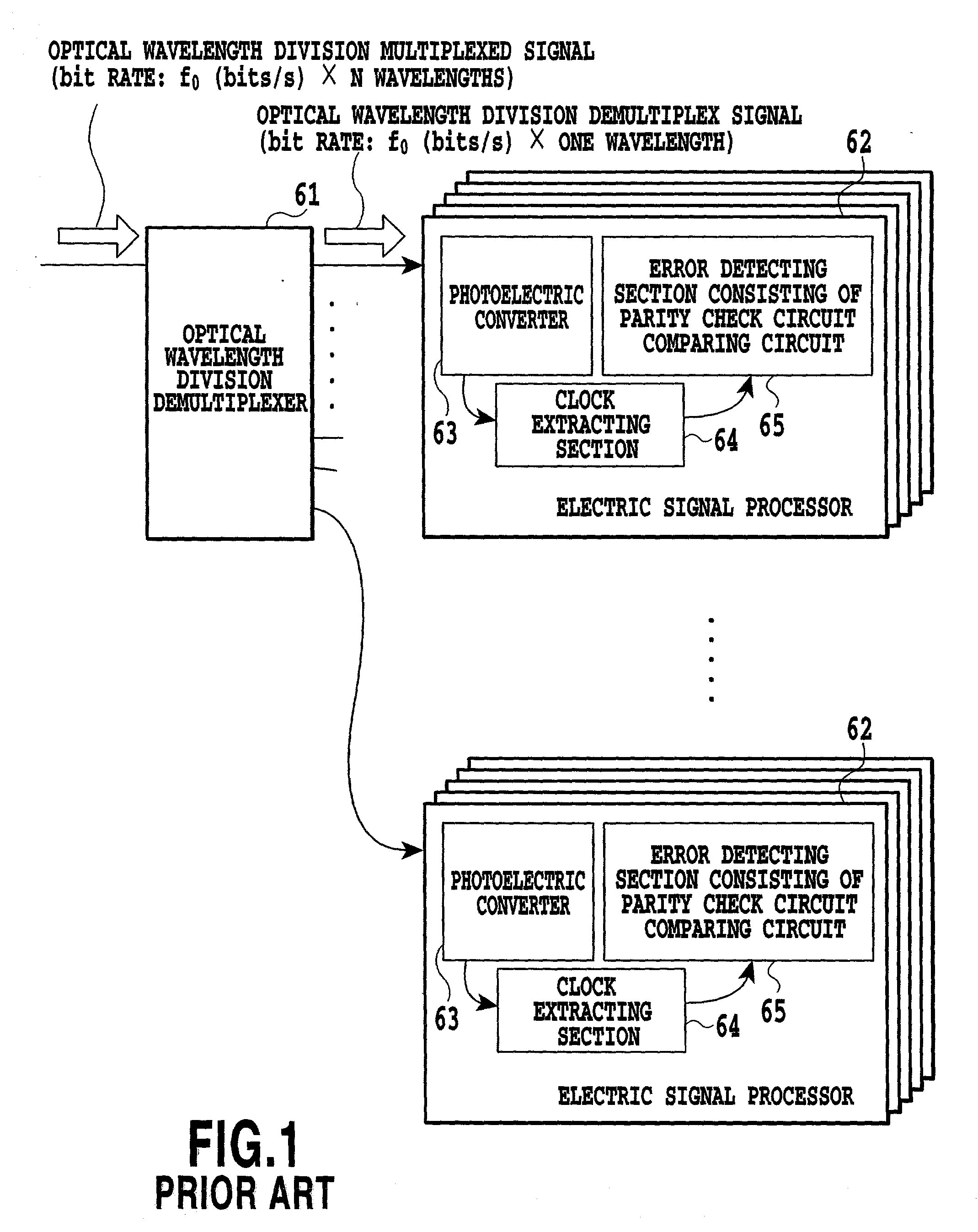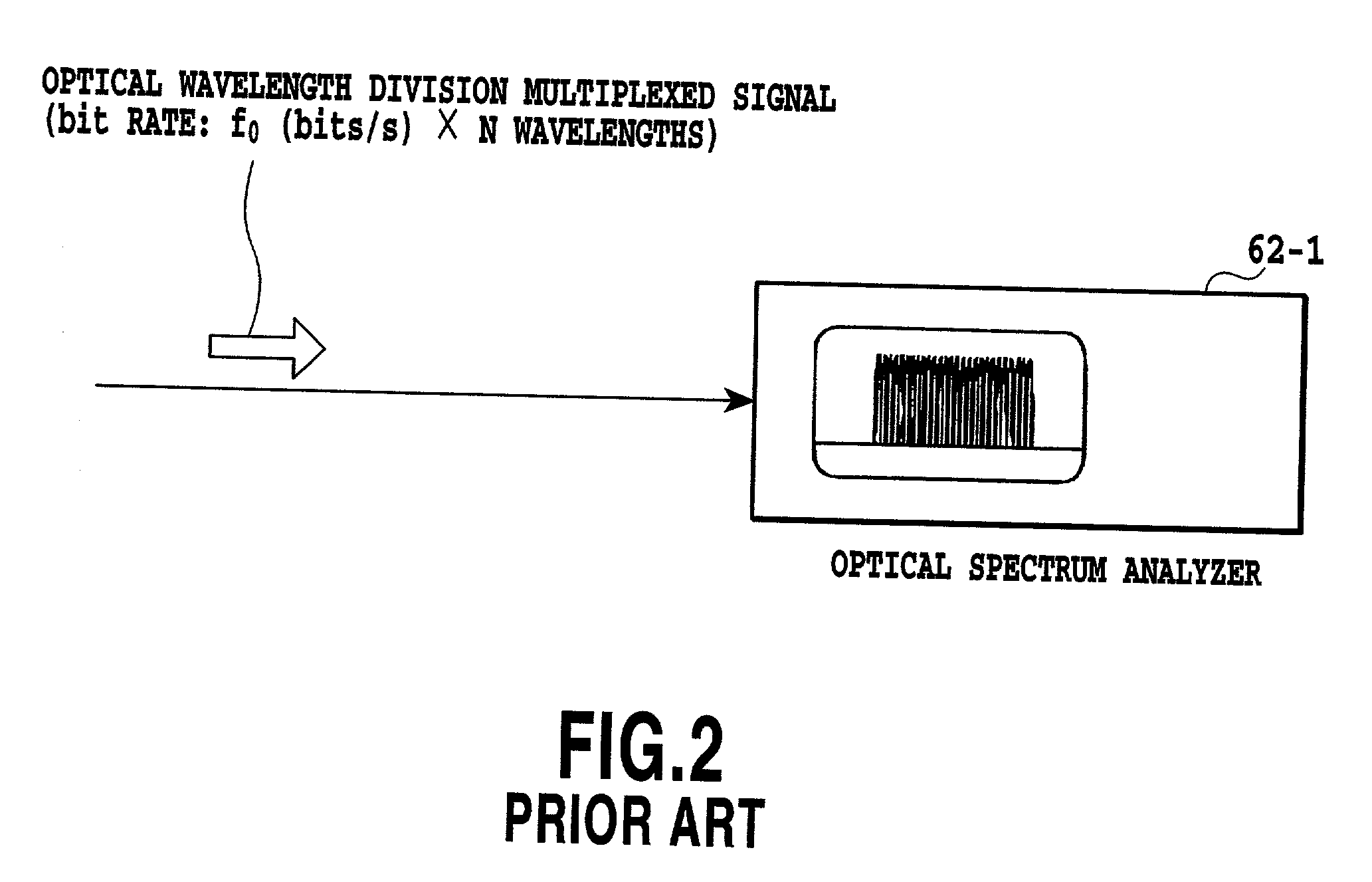Optical wavelength division multiplex signal monitoring apparatus
a signal monitoring and optical wavelength technology, applied in multiplex communication, transmission monitoring, instruments, etc., can solve the problems of not being applicable to multi-wavelength optical signals, unable to directly reflect bit error rates, and inability to detect waveform degradation, so as to increase the range of optical signal bit rate, simplify the entire configuration, and widen the effect of bandwidth
- Summary
- Abstract
- Description
- Claims
- Application Information
AI Technical Summary
Benefits of technology
Problems solved by technology
Method used
Image
Examples
first embodiment
[0104] FIG. 7 shows a configuration of an optical wavelength division multiplexed signal monitoring apparatus of a first embodiment in accordance with the present invention. A wavelength division demultiplexer 11 carries out the wavelength division demultiplexing of an optical wavelength division multiplexed signal consisting of N optical signals with a bit rate f.sub.0 (bits / s) that undergo the wavelength multiplexing. Subsequently, N photoelectric converters 15 convert them into N channel electric signals to be supplied to an electric signal processor 19. As will be described later, the present embodiment is an example in which the electric signal processor 19 stores the N channel electric signals for a predetermined time period, and processes them by reading them sequentially, thereby reducing the electric signal processing process to a single system.
[0105] The electric signal processor 19 comprises N input ports for accepting the N channel electric signals and N voltage holding ...
second embodiment
[0106] FIG. 8 shows a configuration of an optical wavelength division multiplexed signal monitoring apparatus of a second embodiment in accordance with the present invention. The wavelength division demultiplexer 11 carries out the wavelength division demultiplexing of the optical wavelength division multiplexed signal consisting of N optical signals with a bit rate f.sub.0 (bits / s) that undergo the wavelength multiplexing. Subsequently, the N photoelectric converters 15 convert them into N channel electric signals to be supplied to an electric signal processor 19. As will be described later, the present embodiment is an example in which a switching section 191 in the electric signal processor 19 sequentially switches connection of the N channel analog electric signals, thereby reducing the electric signal processing process to a single system.
[0107] The electric signal processor 19 comprises N input ports for accepting the N channel electric signals and the single switching section...
third embodiment
[0108] FIG. 9 shows a configuration of an optical wavelength division multiplexed signal monitoring apparatus of a third embodiment in accordance with the present invention. A wavelength selecting section 42 selects one of N optical signals with a bit rate f.sub.0 (bits / s) that are wavelength multiplexed into the optical wavelength division multiplexed signal, and the selected optical signal reaches the electric signal processor 19 as a single-channel electric signal through the single photoelectric converter 15.
[0109] The electric signal processor 19 comprises one input port for accepting the one-channel electric signal, a voltage holding section 192, a clock distributing section 194 and a data processing section 195. The voltage holding section 192 carries out the analog-to-digital conversion of the input electric signal, holds the digital signal voltage for a time period, and outputs it in response to the external trigger signal delivered by the clock distributing section 194. Th...
PUM
 Login to View More
Login to View More Abstract
Description
Claims
Application Information
 Login to View More
Login to View More - R&D
- Intellectual Property
- Life Sciences
- Materials
- Tech Scout
- Unparalleled Data Quality
- Higher Quality Content
- 60% Fewer Hallucinations
Browse by: Latest US Patents, China's latest patents, Technical Efficacy Thesaurus, Application Domain, Technology Topic, Popular Technical Reports.
© 2025 PatSnap. All rights reserved.Legal|Privacy policy|Modern Slavery Act Transparency Statement|Sitemap|About US| Contact US: help@patsnap.com



